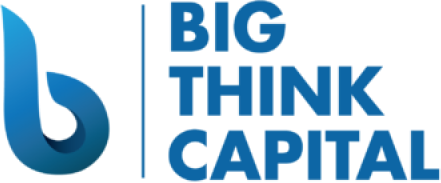Navigating the New Landscape of SBA Loans in a Post-COVID Economy: A Detailed Guide for Small Businesses
Estimated reading time: 5 minutes
- Understanding the different types of SBA loans available.
- Recognizing post-COVID changes to SBA loan programs.
- Identifying funding trends to watch in 2025.
- Implementing practical insights for successful loan applications.
Table of Contents
- Understanding SBA Loans
- Post-COVID Changes to SBA Loan Programs
- Funding Trends to Watch in 2025
- Practical Insights for Small Business Owners Exploring SBA Loans
- How Big Think Capital Can Help
- Conclusion and Call to Action
- FAQ
Understanding SBA Loans
SBA loans are a form of government-backed financing designed to assist small business owners in acquiring the capital they need to operate and grow. These loans are attractive for many reasons, including lower interest rates and longer repayment terms.
According to the SBA, there are several types of loans available, including:
- 7(a) Loans: The most common SBA loan type, ideal for various purposes like equipment purchases, working capital, or refinancing existing debt.
- CDC/504 Loans: These loans are primarily for purchasing fixed assets, such as real estate or major equipment.
- Microloans: Small loans that are often used for startup costs or to finance inventory.
Post-COVID Changes to SBA Loan Programs
As we emerge from the pandemic, several changes have impacted how SBA loans are structured and funded. Here are some notable adjustments that small business owners should be aware of:
- Increased Loan Limits: In response to the pandemic’s economic impact, the SBA increased the maximum loan limits for several programs. For instance, the 7(a) loan limit was raised to $5 million and could pass through special requests for even higher amounts in some cases.
- Flexible Terms: Many lenders are now offering more flexible repayment terms. Borrowers may access longer repayment periods, which can ease the burden of monthly payments during the recovery phase.
- Eased Eligibility Criteria: With a focus on assisting the recovery of small businesses, lenders have loosened certain lending criteria, making it easier for businesses that may not have qualified pre-COVID to obtain loans.
- Increased Funding for Women and Minority-Owned Businesses: The SBA is prioritizing access to capital for underrepresented groups in the entrepreneurial community to promote inclusivity and equity. More initiatives are being rolled out to support these demographics.
Funding Trends to Watch in 2025
The economic landscape continues to reshape the small business funding ecosystem. Here are key trends to observe as we delve further into 2025:
- Focus on Digital Lending: The move towards digital application processes has streamlined the financing experience. Businesses can expect quicker responses and approval times as lenders adapt to new technology.
- Alternative Financing Options: In addition to traditional SBA loans, businesses are exploring alternative finance options such as merchant cash advances and lines of credit, which may cater to different cash flow needs.
- Sustainability Initiatives: More lenders are showing interest in funding businesses with proven commitment to sustainability. Making operational practices greener could enhance eligibility for certain loans.
- Revitalization of Community Development Initiatives: The government is focusing on community-driven lending programs, especially in regions hit hardest by the pandemic. This could increase the availability of capital for businesses in these areas.
Practical Insights for Small Business Owners Exploring SBA Loans
Navigating the new landscape of SBA loans can feel daunting, but here are three practical takeaways to help you on this journey:
- Assess Your Financial Needs Thoroughly: Before applying for an SBA loan, take the time to analyze precisely what your business needs. Create a list of expenses, expected revenues, and how the loan will contribute to your long-term goals. Being specific will improve your chances of success.
- Gather Necessary Documentation Ahead of Time: Preparing your application is crucial to a smooth lending process. Expect to provide personal and business financial statements, tax returns, and a solid business plan. Having these documents ready can significantly reduce delays.
- Leverage Expert Guidance: The lending landscape can be complex, especially in an evolving economy. Engage with a broker or expert who can help you navigate different loan options, understand the implications of terms, and match you with funding that aligns with your objectives.
How Big Think Capital Can Help
At Big Think Capital, we specialize in helping small businesses find the right funding solutions. We understand the landscape has changed, and we are committed to providing tailored assistance based on each business’s unique situation. Whether you’re exploring SBA loans, equipment financing, or lines of credit, our team of funding experts is ready to help you make informed decisions.
Conclusion and Call to Action
As small businesses continue to adapt and thrive in a post-COVID world, staying informed about financing options is vital. SBA loans offer a valuable resource for businesses looking to grow sustainably and responsibly. By understanding the changes in loan programs, recognizing current funding trends, and applying practical insights, you can navigate this new landscape successfully.
Are you ready to explore your financing options? Visit bigthinkcapital.com today or speak with one of our funding experts to learn more about how we can help your business obtain the capital it needs to thrive.






